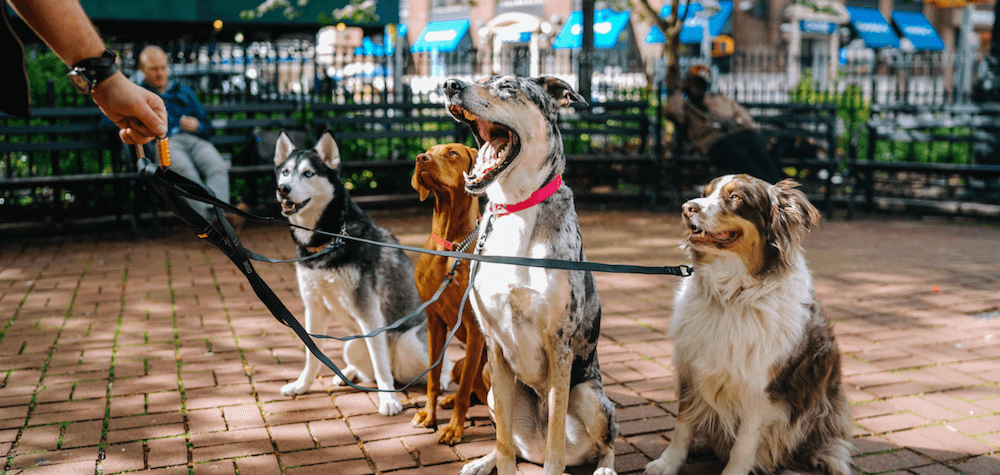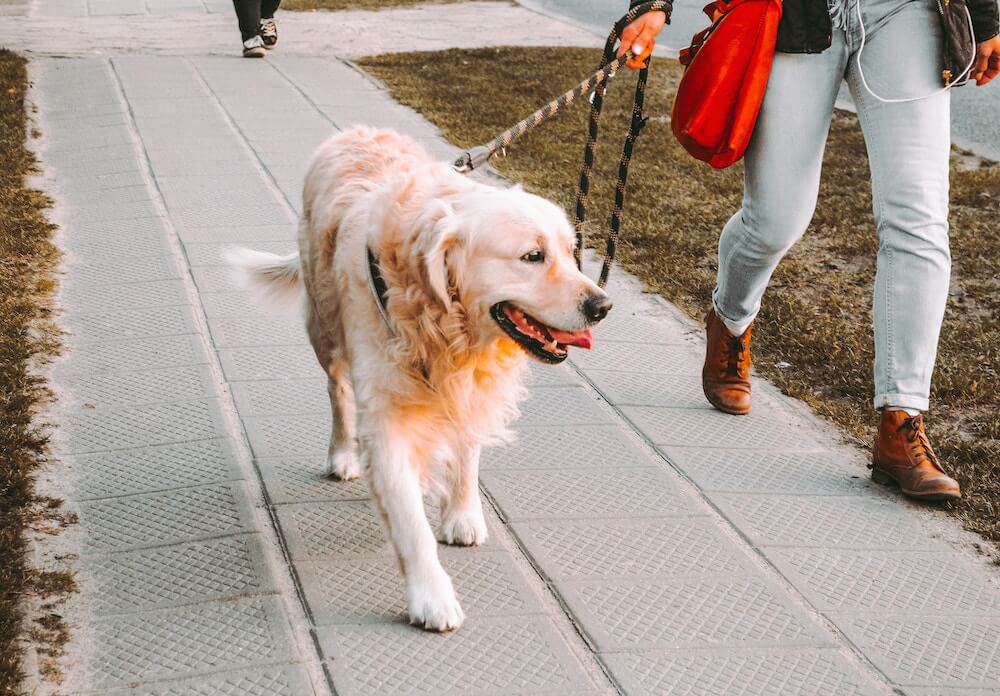Interested in dog walking? Or perhaps you’re already a dog walker, but business isn’t doing so well (or could do better)?
Aside from the obvious love of dogs, anyone wanting to become a successful dog walker needs to understand the common challenges small businesses face. As well as how to overcome them and make your chosen career flourish.
Two in five households in Australia own a dog—that’s almost 4.8 million dog owners nationally. Research also shows that pet owners are more likely to work full-time (65%) compared to non-pet owners, so the demand for dog walkers is fairly high.
While this is great news for anyone wanting to embark on a dog walking career, the first step in a setting up a lucrative dog walking business is to meet and greet these potential clients.
Word of mouth is a key marketing tool in any business, but particularly when you are looking for someone to take care of your fur baby. Through word of mouth you can position yourself as a trusted and caring professional, so get out there and promote yourself.
Here are six more essential tasks for creating a profitable dog walking business.
-
Do your research
Let’s assume you already have the basics—your business name, ABN and have set up a separate bank account. Research is vital for establishing a reasonable price to charge potential clients, to understand the potential market share and to pinpoint your competition (which you can then keep a close watch on).
As a professional dog walker you’re expected to know where you can and can’t walk dogs. Contact your local council to ensure you have a clear understanding of which parks and beaches allow dogs and when they need to be on the leash.
-
Crunch the numbers
Before embarking on any business you need to do your sums. According to Indeed, the average salary for a dog walker in Australia is $22.82 per hour. However, you must take into consideration all your business costs to ensure the prices you charge cover the cost to operate.
In addition to your time, there’s also cost of petrol (if you intend to drive to jobs), car wear and tear, business insurance and items such as spare dog leads, poop bags, doggie first aid kit, treats and play toys.
Talking to other dog walkers, pet sitters and industry professionals is a great way to get a deep insight into what equipment you might need as well as other costs you may have overlooked.
Remember, it’s not unusual for start-up professionals to work two jobs while they grow their focus business.

-
Establish rules & procedures
Aside from dog walking, will you be offering other services (even on an individual request basis)? If so, be prepared. Know which services you will accept and which ones you’ll say no to. For those services you are happy to provide, how much will you charge?
In order to lay down your procedures, start by asking yourself as many potential questions as possible. Carefully consider what a pet owner might ask you. Here are some ideas.
- Do pet owners need to pay upfront, daily or weekly?
- How many dogs can you walk at once?
- Can you train my dog?
- What size dogs do you walk together?
- Are you certified to provide first aid to my dog?
- What procedure do you take in an emergency?
-
Education & certification
As a professional dog walker you are expected to know what to do in an emergency and how to handle different animal behaviours. You may love dogs, but do you have the confidence to deal with an aggressive animal? Are you knowledgeable on training dogs?
For your own sense of professionalism and customer peace of mind you might consider doing obedience training or puppy pre-school. Two recognised accredited courses are the Certificate III in Dog Behaviour and Training and the Certificate IV in Companion Animal Services. Contact The National Dog Trainers Federation or Delta Society Australia. Some TAFEs also offer the Certificate IV in Companion Animal Services.
Having a certificate in Pet First Aid is an ideal way to ensure you know what action to take if a dog is injured or has a medical emergency while in your care.
The following organisations offer pet first aid courses:
- The Pet Professional Guild Australia
- The RSPCA
- Animal Welfare League
The Pet Industry Association Australia (PIAA) represents all pet industry businesses from pet groomers and retailers to breeders, dog walkers and pet sitters. PIAA membership provides you with the opportunity to build and market your business, gain peer support and access to industry experts, as well as join training seminars and events.
-
Get insurance
When everything is ticking alone fine, taking out insurance is likely to be the last thing on your mind. However, professional insurance will safeguard you and your business against potential risks. Imagine if a dog you’re walking bites a passer-by or jumps up at you, causing you injury? It doesn’t bare thinking about but it does pay to ensure you have appropriate protection. Aside from giving you peace of mind, suitable insurance is a great advertisement of your professionalism!
As a starting point you might want to consider professional indemnity, public liability and personal accident. Then, if things go awry when you have dogs in your care, you know you won’t have to fork out for someone else’s vet or medical bills and you won’t suffer from loss of income if you are accidentally injured.

-
Build a robust customer base
A key questions in any business is ‘how will I attract customers?’
Whether you plan to do letterbox drops, use social media or advertise in your local newspaper—you need a well-defined plan of action to appeal to potential new clients. Here are a few ideas.
Visit local vets. Introduce yourself and ask if you can put a notice on their wall or leave some flyers or business cards on their counter. Don’t just drop and run. This is a great opportunity to build friendships and create a rapport with other well-respected pet industry professionals.
Network. Connect with established dog walkers and pet sitters in the area, offer to fill in while they’re on holidays or sick and ask if they can recommend you to their clients.
Create an introductory offer. Entice new clients with a one-off discounted rate. Just make sure people are aware it’s a ‘special’ price and advise of the normal ongoing rates to avoid disappointment.
Attend local pet events. Go prepared to introduce yourself, chat to pet owners and promote your service. Take flyers to hand out or, if there’s the opportunity, have your own stall with information about your dog walking business.
There are myriad clever and creative ways to promote your dog walking business. It just takes confidence and a proactive approach. Stay determined and your dog walking business will soar.
Latest posts by Liz Walden (see all)
- Pet health: Medicinal cannabis for pets - December 27, 2021
- What pet business insurance do I need? - November 17, 2021
- Pet sitters: how to take time off - November 15, 2021










Simply wish to say your article is as astonishing.
The clearness in your post is just excellent and i
can assume you’re an expert on this subject. Fine with your permission let
me to grab your feed to keep up to date with forthcoming post.
Thanks a million and please continue the rewarding work.
hello my name is chenelle and i would like to know more about the dog walking business cause i would like to have my own dog walking business one day. but i would like to know what do i have to do to do that
Hi Chenelle, maybe a good place to start is with your local council to find out what is required in your local area. Then why not speak to other dog walkers you see around and about and ask them how they got started.